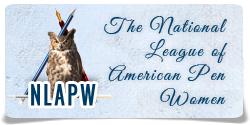Gaia’s Lament: A Call to Awaken
Page 2
“Bracelets of Thorns” by Calder Lowe (Poem)
At dawn, Lucca arises to the foreboding evil enveloping
Her in the day-to-day, the suffering her priest
Had posited in his homily was God’s Mystery
And therefore exempt from explanation. The depreciation
Displayed by the convalescent home director who shoots
Her Death Ray glance at visitors seeking care for a loved one,
As though autocratic posturings could destroy their souls
and subjugate them to her puny powers, machinations promulgated
from infancy at the knees of the sisters of No Mercy. Lucca spotted the slits
For eyes some social workers possessed who in the guise
Of helping clients strove to camouflage their ilk, their rattles
And slithering movements brought into sharp relief amidst intercom static
And under fluorescent light. Dead giveaways to their desires
To dominate and maintain ill-gotten advancement through half-truths
Copied in triplicate for false entities promoting Hope,
Another misnomer for conspicuous greed housed in leather binders.
With do-gooders clothed in designer office uniforms,
Their condescension is conveyed through a touch on clients’
Hands on glass partitions at just the right moment to lull
Them into falling for beneficial outcomes if only they are willing
To be docile, to swear they will never trade their food stamps for drugs
Or guns. Allotted metal slots in front of them willing to accept their proof
Of identity to earn their chit on the dole, while those who stole their hard-earned
Pensions party in the Caymans, slip dollar bills into the thongs of strippers,
Bungle salsa moves in pin-striped suits, snort lines of coke off rhino hides.
The shattering resounded throughout the valleys when the wires
Suspending an indigo butterfly mask snapped leaving it in smithereens
on Lucca’s redwood deck. She scooped the shards in her hand
and chiseled bracelets of thorns around her wrists, each droplet
forming its own hieroglyph. The taste similar to pomegranate and
formaldehyde stung her mouth as she sucked the excess seepage
off her arm, now a transfigured teat nurturing her with its dark sap
a distillation of all those who posed as humans but who were predators
if you sniffed them upwind. Raised as she’d been by ferals, she drifted
Off to sleep, under the crescent moon, blood pooling as through a rusted
Spigot from her wrists until the orb waxed full and her father, mother,
And lastly, her childhood molesters, whimpered at her feet,
Their incisors chipped, their tails mere stumps severed by the breakage
Of blasphemous masks baked in the kilns of embittered artists
Intent upon smearing disingenuous faces upon icons robbed
From the Inuit, Cheyenne, Crow. The bastardization of the Sacred their mission
As they employed verbiage in grants to trick non-profits into thinking
They cared about indigenous peoples in the confines of their posh studios punctuated
By feathered talismans and skeletal remnants of animals they would as obliviously
Run over as revere on canvases, in metal sculptures, stained glass, ceramic excess.
Lucca rocked on her heels, licking her drying wrists, addicted
To the acrid taste. In carving the bracelets she appropriated
The butterfly’s transformative power, the stealth of the fox who crossed
Her muddied path carrying its gutted sparrow to feed her kits.
They eyed each other as kin. Two beings coexisting in a leached
Landscape of herbicides and oil particulates in watersheds,
Genocide under the cloak of Big Pharma “Suits” and payroll lobbyists.
While driving one day, Lucca imagined herself wearing the severed head
of the antlered buck she’d seen in a ditch a mile earlier and pulled over to allow
The faster cars to speed by. After three had jetted past, she looked
Over at the passenger’s window where the buck in his glory laid
His nose on the glass pane as if in greeting, then leapt across
The road’s divide. No. Lucca would never again consider herself
A “human.” She was all animal, prepared to milk the fangs
Of the venomous profiteers whose sole intention was to deprive
The deserving of their dignity all in deference to the bottom line.
They were blind to the fact more and more were awakening to their stench,
Seeing through their duplicity, noting freon and fossil fuels running
Through their veins instead of oxygenated blood. Lucca watches
The carotid arteries of the two-legged ones and knows when to strike
As well as when to bide her time behind the cement pillars
Of corporate parking lots. Perfecting her skills in batting cages,
Those impulses course through her body harkening to her softball days
When she was young, wild and conversant in the multiple languages
Of graffiti on alley walls, wind, the hawk’s screech, the raging
Waterfalls, ominous funnel clouds converging on the horizons in Indiana,
Illinois, Texas. She intuits her purpose in these dark days is not to be invisible,
Submissive, but to be an implacable steward of this planet, all its species,
And translucent beauty. Her eyes dart up one day to see two dragonflies
Replicating a DNA helix on her car antenna. What she envisions are their tears
Christening her windshield. Outside her bedroom window, a titmouse
Benediction unfolds as the bird layers its nest with hair, shed snake skins,
Mimosa blooms. They all acknowledge Lucca as a seer, as one of them.
Though softening, she spurns expectation, the hollowed gullet
Of a televangelist pitching Heaven for a $200 tithe, any path
Espousing toxic ideologies, tongues forked to better spread the lie.
“Why not attend the bird” by Robert S. Pesich (Poem)
no one has seen or heard
but for its scarlet shells
left behind in a pendant nest
always hanging among thorns
woven also from your hair
as well as what you tear
with your hands and a single word
“The Weight of the World Above Us” by Jill Delaney (Essay)
The reality of the climate crisis has never been so prevalent than this very moment. Despite Donald Trump questioning the legitimacy of global warming over 115 times on his Twitter account, @realDonaldTrump, it seems that the world has come up with an abundance of ways to make her blight known to humankind (Matthews, 2017). When the novel coronavirus swept around the globe and quarantines were in full effect, the lack of human activity seemed to spark a breath of relief from the flailing earth. In India, where 1.3 billion people were put into a lockdown to try and slow the spread of the novel coronavirus, there was an unusual phenomenon that took 21 days of quarantine to occur: blue skies. New Delhi is known for having some of the dirtiest air on the globe; sometimes even calling for planes to be grounded and schools to be shut because of how dangerous the airborne pollutants are (Pathak, 2020). However, as the virus put everyone’s lives on hold, the abrupt halting of all sorts of polluting activities (construction, vehicular operations) put Delhi’s March 2020 Air Quality Index rate at 45, whereas in March 2019 it landed at 160 (Pathak, 2020). India was not the only place to have drastic environmental transformations due to human inaction: the Venice canals found themselves clear in ways that are “unlike anything they’ve seen in decades.” (Moraca, 2020). Cormorants, large diving birds, were able to hunt for the fish living in the canals due to how clear the water became, according to Lidia Feruoch, president of the Venice branch of Italia Nostra, Italy’s largest environmental group (Moraca, 2020). The rapid reverse of contaminated environmental spaces, while encouraging, only furthers the idea that humans are the principle cause of the failing condition of our planet. Even in recent days, our polar ice caps have been at the helm of the teetering precipice that humanity is pushed itself towards.
While it is no secret that the ice shelves sprinkled around the earth have been put to a level of strain unlike ever before, it seems that their deterioration is coming more swiftly than previously thought. From July 30 to July 31, 2020, the Milne Ice Shelf located on the Ellesmere Island in Nunavut, Canada, was “reduced by 43% in area” due to “above-normal temperatures, offshore winds and open water” (Brink and Chinchar, 2020). The area lost to the sea, which already broke up into two pieces since its collapse, was larger than the island of Manhattan. According to Giuliani-Hoffman (2020), two more polar ice caps in the same area have vanished. Mark Serreze, the director of the National Snow and Ice Data Center, calls the observance of the dissolving ice ‘Arctic amplification,’; he continues on to say that the Arctic is “melting anywhere from two to four times faster” than the rest of the globe. As for the animals who depend on the foundering ecosystem, their fate also lays with the movements of humans. The National Snow and Ice Data Center (2018) says that there are six seal breeds that live in the Arctic, with three of these breed’s survivals depending wholly on the sea ice: the ringed, harp, and bearded seals. The loss of ice for these species has been the cause for an increased mortality rate for seal pups, and the diminishing prey has been putting a strain on their existence. Many people know about the food chain; it’s something countless learn in their elementary school science class. From that knowledge, many also know once one group of animals is thrown out of balance, the others that depend on their existence begin to suffer as well. With a declining seal rate, the polar bears, who prey upon the blubbery mammal, have found themselves in a world they have never dealt with before. The 2017 viral video from National Geographic shows a polar bear who has been whittled down to bones and hanging flesh due to the lack of food sources available for it to sustain a normal or even subpar weight. The emaciated creature shows accurate proportions as to what could happen to the rest of its species.
The vanishing ice caps not only effect the animals who inhabit them—it also directly effects how humans will live their lives. Should the entirety of the five million cubic miles of ice melt, sea levels would rise by 216 feet (National Geographic, 2013). Millions would be displaced in the United States alone: those who live on the east coast, the Gulf of Mexico, and California would find themselves underwater (with Florida vanishing completely). It would spur extreme droughts and heat, and the creation of new bodies of water in previously landlocked areas. Humanity would be forced to crowd in on itself, and the economic effect would be astronomical. Arctic ice also holds a variety of ancient diseases that have been trapped within them—if the entirety of the ice were to melt, it would release a host of illnesses that humanity has not dealt with in hundreds of years (Kantor, 2020). Remnants of the 1918 Influenza pandemic have been found in the ice in Alaska by researchers, Kantor continues on; if a hundred-year-old disease managed to survive through the ice, there could be a serious health crisis not unlike the novel coronavirus, unleashed upon the world. This progression of the melting ice caps could hypothetically be slowed, and even stopped. According to Williams (2017), there is upcoming technology that could potentially help refreeze the ice through wind-powered pumps. These pumps would push the water up to the still solid ice, where it would have a better chance to freeze, thicken, and expand across a wider area. This project already has prototypes developed and would cost $500 billion to implement across the length of the entire Arctic. Not only would it help the climate crisis hopefully slow down to a degree, it would also open up a new economic front. These machines need manufacturers, installers, surveyors, repairers: it would create a new subdivision of work that could help bring unemployment rates down and open the world to a safer, healthier way of production and economic profit.
One of the causes of this decline in ice caps also lays within a root of the climate crisis: the greenhouse effect and industrial activity. The greenhouse effect can be described as when the gases we produce—carbon dioxide (cars, planes, power plants, fossil fuels), sulfur dioxide (smog from industrial emissions, as well as a component in the development of acid rain), and methane (primarily developed from livestock like cattle and the release of gases from swamps)—are trapping the sun’s rays within our airspace (National Geographic, 2018). While it is commonly thought that the everyday residential people are one of the main contributors to this effect by not carpooling or forgetting to recycle, the reality is that the big manufacturing and oil corporations are the real culprits. The Union of Concerned Scientists (2015) has come to the conclusion that 2/3s of all industrial CO2 emissions come from 90 companies like BP, Shell, and ExxonMobil. The use of concrete in particular has been a major proponent of the carbon dioxide issue. CNN (2018) describes the cement used in concrete is responsible for 7% of the man-made greenhouse gas problem that has been plaguing the world: each pound of cement used is responsible for one pound of carbon dioxide released into the atmosphere. Since concrete is the second most consumed product in the world after water and is the second most polluting industrial material in the world, the impact has been significant on our planet (CNN, 2018). While this may seem frightening, there is a company that has developed a technique to trap the carbon dioxide within the concrete: CarbonCure. CarbonCure will inject wet concrete mix with a mineral called calcium carbonate, and the reaction between the ions will seal the emissions within the concrete while also strengthening the material beyond its normal capabilities (CarbonCure, 2020). Between the hypothetical and the newly implemented, technology will be able to help the world stall the progression of global warming should it decide to take the first step towards a solution.
The climate crisis will not cease its building crescendo. While the poison of this emergency has sunk deep within our societies, creating increasingly aggravated climate events, toxifying our air, and contaminating our water supplies with microplastics, we cannot give up. Our planet has provided for millions of species of animals, including humans, and it is time that we start providing for her.
REFERENCES
Brink, H. & Chinchar, A. (2020, August 8). Canadian ice shelf larger than Manhattan collapses into the sea.
CarbonCure. (2020). Innovative CO2 Technology. [Data Sheet]. Canada: CarbonCure.
CNN. (2018, September 28). This concrete can trap CO2 emissions [Video].
Giuliani-Hoffman, F. (2020, August 5). Two Canadian Arctic ice caps have completely disappeared, satellite imagery shows.
Huertas, A. (2015, April 7). Dear humans: Industry is causing global warming, not your activities. Union of Concerned Scientists.
Kantor, M. (2020, July 17). On Coronavirus and climate change. Forbes.
Matthews, M. (2017, June 1). Donald Trump has tweeted climate change skepticism 115 times. Here’s all of it. Vox Magazine.
Moraca, S. (2020, May 12). The canals are clear thanks to the Coronavirus, but Venice’s existential threat is climate change.
National Geographic. (2018). Air pollution: Pollutants in the air aren’t always visible and come from many different sources [Reference Document]. United States: National Geographic.
National Geographic. (2017, December 11). Heart-wrenching video: Starving polar bear on iceless land | National Geographic [Video].
National Geographic. (2013). What the world would look like if all the ice melted [Reference Document]. United States: National Geographic.
Pathak, S. (2020, April 10). With Coronavirus lockdown, India’s cities see clear blue skies as air pollution drops. NPR.
Williams, M. (2017, February 24). It might be possible to refreeze the icecaps to slow global warming. Universe Today.
“Earth Saving” by Lara Gularte (Poem)
She scales mountains,
to call the forests and rivers back,
a return of each tree, the pure waters.
Miles of dying conifers
desperate for rain,
to escape beetle infestation.
In rock face, engraved crosses.
She remembers her house full,
no empty seats around the kitchen table.
Every day another loss, the spotted owl,
memory of songbirds covering the sky,
a beak on each tree limb.
In the arms of wind,
the moon has its teeth in her,
her shoulders too weak to hold up the world.
“Southern Alps, New Zealand” by Kathie Isaac-Luke (Poem)
Here the land gives way
to terraces of rock rising
indifferent to the twists
of tempests, impervious
to everything but the streams
of melted snow etching
out crevices and entrances
to caverns which mouth
swells of cloud. Fringed with wild
lupine, their petals shaped
like teardrops, the mountains
silently bare their scars—
the deep ones from intemperate
mining—and seasonal ones
from tree avalanches where
red lichen has already begun
the next regeneration. It is longer
than we can imagine since these
peaks pushed their way through
the earth’s surface and longer
yet until the unrelenting condensation
wears them down again.
The Maori have a saying
posted now in the terminal
where boats leave for Milford Sound.
In their language, the vowels flow
like water bubbling over stone—
Toitu he kainga
Only the land remains
whatu ngarongaro he tangata
when the people have disappeared.
Published in Chrysalides. Dragonfly Press, 2010
“Silk Road” by Kathie Isaac-Luke (Poem)
Routes were etched there long ago,
in time the cargoes change—silk
for ornamentation, poppies
for oblivion, the seeping residue
of fossil—the oil that empires
covet because it finally gave us wings.
Here alliances shift, borders are redrawn,
and history is shaped
by betrayals large and small.
Chang’an, Tashkent, Peshawar,
Herat, Babylon, Istanbul…
Is there any city I have traveled in
I can remember without grieving?
Any country left not fallen
or falling?
Published in Chrysalides. Dragonfly Press, 2010




